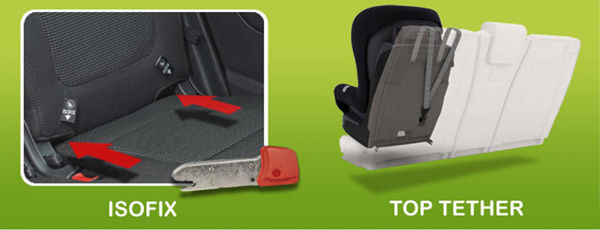ISOFIX Compatible Products
Isofix is designed to make installing your car seat quick and easy.
On 19 September 2014, the Australian Competition and Consumer Commission approved the use of products made compliant to 2013 Child Restraints Standard AS/NZS1754. The 2013 revision introduces a number of significant changes to the way Australian children will be restrained in cars in the future and allows manufacturers to now sell these restraints in the Australian market place.
Key changes to the Australian Standard for parents to be aware of include:
- Isofix Compatible Seats - Child restraints may include lower attachment connectors allowing them to be engaged with ISOFIX low anchorages in motor vehicles, where fitted. This new category is similar to systems offered overseas, however, it will require the use of an upper tether anchorage strap for additional safety
- Harnessed Seat 6m to 8yrs - A new category of child restraint (G-Type) with an in-built harness for children from approximately six months up to eight years of age will be introduced. Previously restraints with an in-built harness have only been available for children up to approximately four years of age
- Rearward Facing Longer - A new category of restraint will allow parents to keep their children rear facing up to approximately two to three years of age, if they choose. This is a significant development as it is widely acknowledged by safety experts worldwide that children should be rearward facing for as long as possible
- Low Birth Weight - Introduction of child restraints that are suitable for babies that are of low birth weight or premature, and
- Aircraft Compatibility - Introduction of aircraft compatibility requirements allowing appropriate child restraints to be labelled suitable for aircraft travel.
WHAT IS ISOFIX?
An Alternative Installation Method For Your Child Car Seat
In the early 1990’s an International Standards Committee on child restraints started developing a standard system for installing child restraints into cars without using the seat belt. This system became known as ISOFIX. The main expected benefit from ISOFIX compatible child restraints is an improvement in fitment to the vehicle.
There will be two styles of Isofix attachment methods available, Rigid and Flexible.
Please note, this move to allow the use of child restraints that connect with ISOFIX low anchorages in a car does not mean that European or American Child Restraints will automatically meet the Australian Standard. All child restraints need to meet the Australian and New Zealand Standard AS/NZS 1754, which has a higher level of testing requirements as well as other important design requirements.
When purchasing a car seat it is important to remember that all child restraints that meet the Australian Standard have the ‘five tick’ standards mark that confirms compliance.
Australian drivers who use a European ISOFIX or American LATCH child restraint are not obeying the Road Rules and are at risk of receiving a traffic infringement.

What is G-Type?
A new category of child restraint (forward facing) that will safely restrain your child in a 6 point harness from approximately 6 months up until 8 years of age (approximately 95% of 8 year olds). Previously restraints with an in-built harness have only been available for children up to approximately four years of age.


